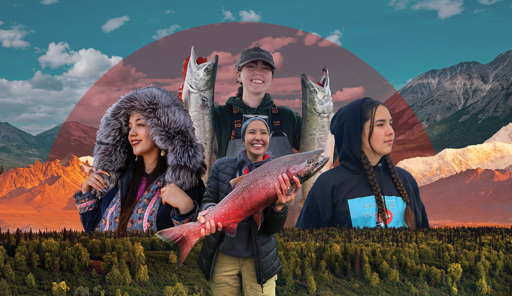Alaska Native youth are living through a pivotal time, bearing witness to the dramatic impacts of climate change that have occurred during their lifetimes: rapidly melting permafrost, warming oceans and declining salmon runs. Subsistence living, which is critical to Alaska Native culture and rural food security, has suffered in turn, whether it involves Iñupiaq whale hunts, Gwich’in caribou harvest or Tlingit salmon fishing. The threat to a shared way of life is uniting many Indigenous people across the state, calling them to protect Alaska Native homelands and cultural continuity.
In light of this, many Alaska Native youth are dedicating their careers to protecting the environment and bringing Indigenous knowledge into mainstream spaces, including environmental science, policy work, increased tribal co-management and conservation initiatives. High Country News talked to four young Alaska Native women from different parts of the state who are working in climate advocacy, from community organizing to fishery sciences.
Siqiniq Jazmyn Lee Vent (Koyukon Athabascan and Iñupiaq) has attended Ambler Road meetings for half her life. Vent, who is 24, went to her first meeting at 12 years old. At that time, the Ambler Road project — which would build a 211-mile-long highway to a mining project through sensitive habitat — was in the beginning stages, and different road maps were still being considered.
Vent co-founded No Ambler Road in 2023 to amplify the voices that oppose the proposed road, which could harm caribou migration patterns and habitat along with salmon spawning streams. For Vent and many others working on No Ambler Road, the project is much too risky, given that caribou populations are declining in Alaska and across the Arctic, and people can’t fish in the Yukon River.
“I really envision a future where Alaska Native people have title to our land and are able to engage in these decision-making processes that directly impact our livelihoods.”


